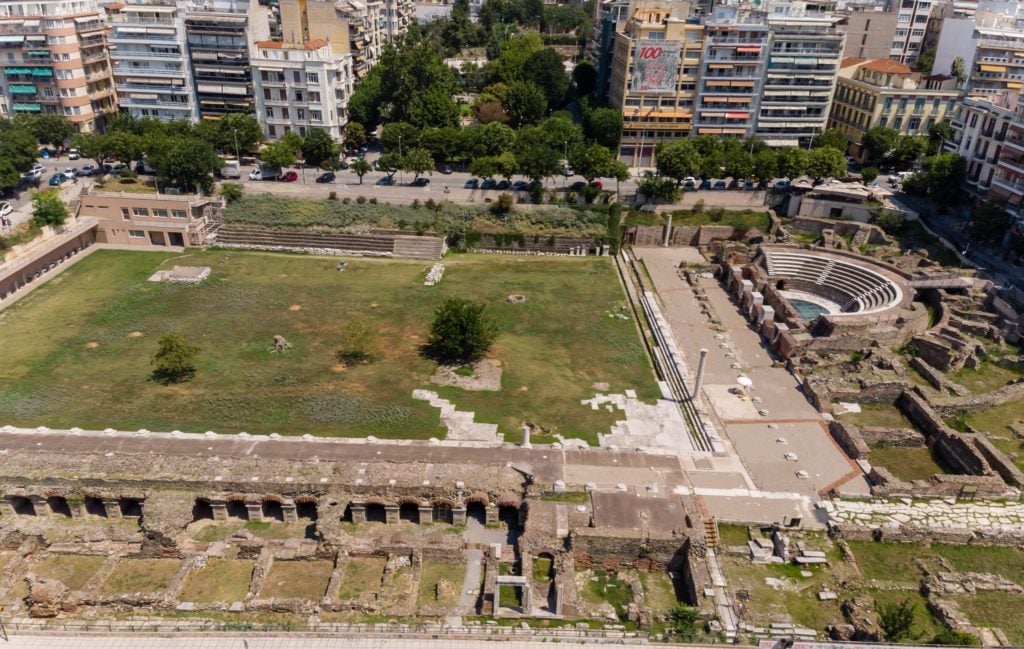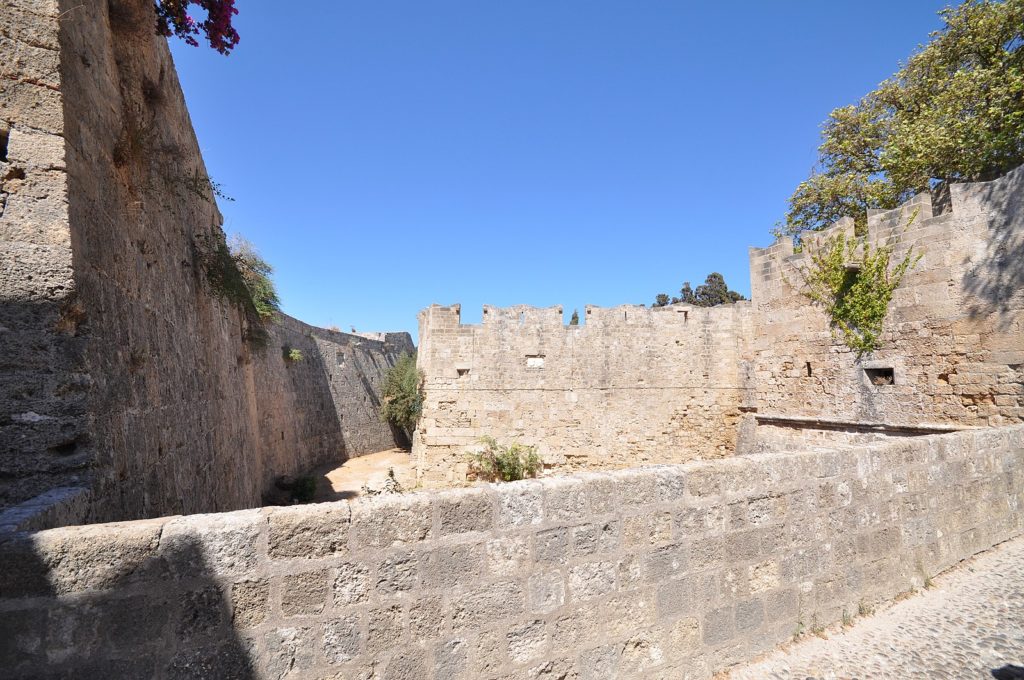
Despite wide diversity, city-states in Ancient Greece were united by a common design system that structured their architectural landscape.
Cities occupied a special place in ancient culture in Greece since they were relatively independent units not only economically but also militarily and politically.
Initially, settlements grew organically without a common design idea. However, later, ancient Greeks began to rebuild their towns and plan public areas according to certain universal rules.
The city layout usually had a rectangular structure. Streets and houses were arranged in such a way that their inhabitants could access water, have a lot of sunlight, and be surrounded by bountiful landscapes.
Inventor of urban design
Hippodamus, an ancient Greek architect and urban planner, is considered to be the founder of this system.
He introduced a new principle of city planning, which was characterized by geometric shapes and straight wide streets intersecting at right angles.
Commissioned by Pericles around the middle of the 5th century BC, Hippodamus developed a plan for Piraeus, the port of Athens. He is also credited as the one who designed Ancient Rhodes, which is now roughly under the entire modern city.
Thus, the settlements were built and designed according to certain beliefs and had much in common.
Ancient agora

The agora was the heart and center of the hectic life of any city in Ancient Greece. It was a large open space where people met, socialized, traded, discussed political issues, and gave lectures.
They were shaped as squares or rectangles and spacious enough to host plenty of shops and markets. Those squares were located close to the center and all main city roads led to them.
Temples in ancient cities
The 🏛Temple of Artemis, also known as the Temple of Diana, was a monumental ancient Greek temple located in the city of Ephesus, which is in present-day Turkey. It was dedicated to the goddess Artemis (known as Diana in Roman mythology), who was the Greek goddess of hunting,… pic.twitter.com/hDgBKRPp7m
— Ancient Chronicles (@AncientLoreHub) August 8, 2023
Ancient Greek temples positioned around the Agora were dedicated to patron gods like Athena for Athens and Zeus for Olympia. These sanctuaries were designed with luxury in mind and decorated with frescoes and precious statues. A distinctive feature was the outer colonnade encircling the temple.
The towering sculptures of deities stood tall in the center for attention. Constructed from materials such as marble and bronze, these figures depicted gods standing or seated on lavish thrones.
Temples were part of sacred complexes, often featuring gardens and fountains. Entry was reserved for priests, while citizens participated in religious life through festive processions and offerings at altars outside.
Stoas
The Stoa of Attalos, Athens, Greece pic.twitter.com/YJ2Tq916h0
— Cihancan (@Cihancansezgin) December 9, 2022
A stoa, or covered walkway, lined the streets and provided shelter for pedestrians. These spaces encouraged people to gather, converse, and share news.
These structures looked like free-standing walkways with a long wall and a row of columns in front of it.
Frequently, they served to mark the agora’s boarders, while the rear wall had special openings to shops where merchants sold their wares.
Theaters in Ancient Greek cities

Theaters, alongside agoras, held significance in ancient Greek urban landscapes. These open-air structures were predominantly semicircular, utilizing the natural slope of hills to create amphitheater-like arrangements.
The tiered steps were segmented into wedges by stairs extending from lower to upper seats. Low railings enclosed the edge seats, while the first row featured stone backs reserved for dignitaries, priests, and esteemed guests.
Typically, a theater featured a circular and level space called the orchestra, which was separated from the front row by a low barrier.
Initially covered with sand and later paved with stone slabs, theaters could typically accommodate crowds of ten to twenty thousand people.
Residential areas
The dwelling homes of the ancient Greeks were quite different from the richly decorated buildings of public significance. As for their own residences, they preferred simplicity and conciseness.
Here is how would be a house look like in Ancient Greece. You can see that the rooms are around an open-air courtyard that might have a well and a small altar, the andron (mens' room) and gynaeceum (women's room) since normally men and women ate and worked apart. pic.twitter.com/M9Wru7r1ym
— Cartier Bresson (@bresson_cartier) April 22, 2022
The houses of upper class families have been studied most extensively. As a rule, they were quite low and consisted of one or two floors. The premises faced the street with blank walls, and all life was concentrated in the courtyard. This open area was the main source of natural light, and the inhabitants used it for cooking, raising animals, and building religious shrines. There was also a place for heating in winter and a well with fresh water.
According to the general design plan, there were covered passages along the perimeter of the courtyard, which eventually turned into a colonnade. This type of Greek interior later became known as the peristyle.
The houses consisted of two or three rooms, the floors of which were adobe or stone. Wealthy people often chose more expensive marble tiles for flooring.
In ancient times, homes innovatively featured bathrooms supplied with water through pipes. The air in the room was at a comfortable temperature due to wind heating from the hearth of the next room. As for lighting, the owners of ancient Greek houses used resin torches.
Sectors for men and women
Within many households, a distinct feature emerged in the form of a designated men’s chamber, known as the andron. These rooms were typically elevated on platforms, representing the main and most decorative space in the house. The andron served as the epicenter of social activities, hosting guests and celebrations. A prevailing notion suggests these spaces were solely utilized by men.
In parallel, the women’s space, known as gynaeceum, found their place either on the second floors or secluded private sections towards the back parts of the building.
Defensive walls in city design

Massive walls around cities were a necessary and indispensable element of the urban structure to protect against raids from neighboring enemies.
Stones and bricks were the most commonly used materials for building defensive walls. Such structures also often included towers and gates for observation and repelling hostile attacks. Sometimes walls extended all the way to the city’s seaport so that new supplies could flow into the city during a siege.
The only ancient Greek city that did not have defensive walls was Sparta. The legendary legislator Lycurgus said that a well-fortified city is one surrounded by a wall of men rather than a wall of bricks. The ancient Spartans considered themselves invincible warriors, so they were proud of having no special urban constructions for protection.
See all the latest news from Greece and the world at Greekreporter.com. Contact our newsroom to report an update or send your story, photos and videos. Follow GR on Google News and subscribe here to our daily email!



